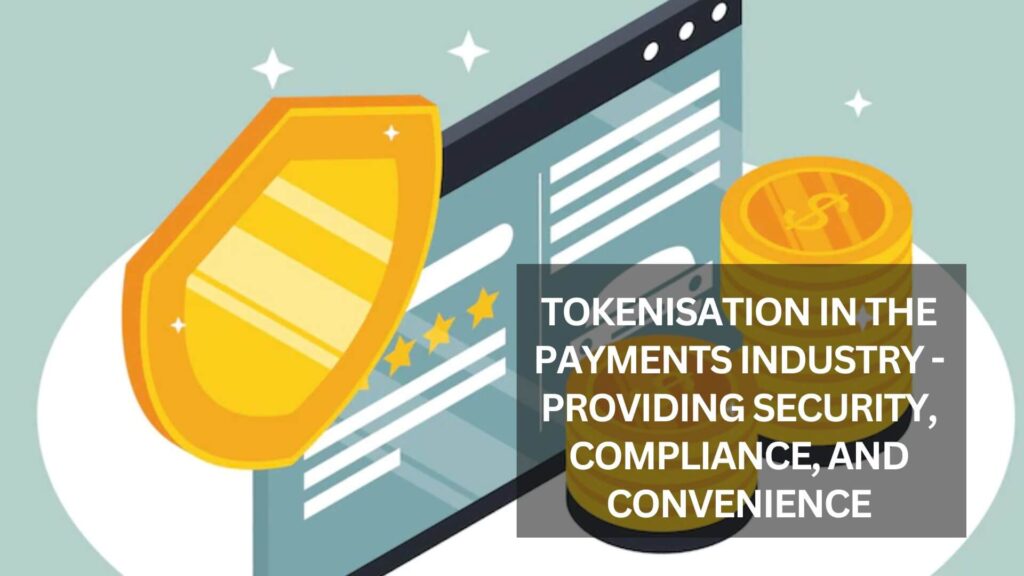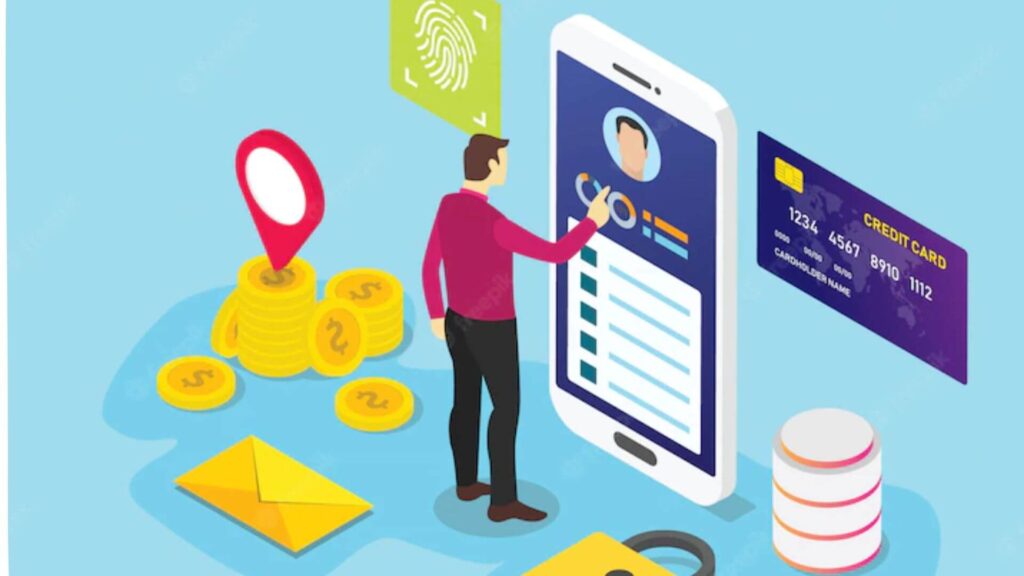Tokenisation is an easy process in theory but the complexity of different implementations can add to its complexity. Tokenisation involves the break-up of a particular piece of information or assets into a set of mathematical tokens and then incorporating the tokens as an active part of each transaction. In the world of payments, it is the client’s principal account number (PAN) that is transformed into tokens by replacing it with a random sequence of numbers as well as alphanumeric codes. These are tokens. They function as an abstraction of the data so that the sensitive data will not be disclosed when an online payment transaction occurs. Tokenisation offers many advantages.

Tokenisation in the Payments Industry
Tokenisation isn’t a brand-new idea in the payment industry. It has been in use for a while. In recent times, the entire concept of cryptocurrency as well as distributed ledger technologies is built on tokenisation. Tokenisation is integral to the industry of payments, and can benefit it in these ways:
Data Security:
A token is transmitted via the internet, instead of sensitive information, in the payment process. Any hacker who monitors the transaction won’t be able to determine the identity of the sensitive information involved during the transaction. This allows secure transactions at the point of sale and secure storage of information about your card for mobile wallets and eCommerce platforms. The tokens are created for each online store that stores the cardholder’s information and adds another level of protection.
Regulation Compliance:
Regulators are tightening their oversight of websites that store credit card data. This is mostly due to the increasing number of high-level breaches by large companies. Merchants are required to adhere to this standard Payment Card Industry Data Security Standard (PCI DSS) and make sure that they keep the data of the cardholder protected. Tokenisation is a great way to do this in a significant way and can also help reduce expenses since, without tokenisation, the merchant has to consider other options to meet the requirements.
Convenience:
Through tokenisation, consumers are only required to enter their data into an online platform only at a single time. In addition, since the consumer’s personal information isn’t stored on the server of the merchant this means there’s less risk and more convenience. This is particularly useful for payments that are recurring, as tokens eliminate the requirement to enter sensitive data manually in each transaction.
Tokenisation Mechanisms
There are two types of tokens: one-time, transaction-specific tokens and ones that are able to be used for a range of uses. This is the primary distinction, but there are other types of tokens, like irreversible or not-reversible, verifiable or not verifiable, high or low value, and so on.
Many credit card companies use their own tokenization mechanisms. Two that are most well-known include those that use the Visa Token Service (VTS) and Mastercard’s Digital Enablement Service (MDES). These two services VTS and MDES provide a variety of common benefits that are expected from tokenisation of card transactions. Information that is sensitive is replaced with an electronic token that can be utilized by online merchants as well as the implementation features that allow online, in-store and mobile app transactions. With regard to mobile apps, the function of tokenisation becomes more significant due to the fact that mobile purchases are more susceptible to fraud compared to transactions made online or in stores.
Visa MasterCard’s and Visa’s token service have been designed to be compatible with the majority of the latest protocols and standards including the ongoing introduction of 3-D Secure 2 (3DS2). 3DS2 is expected to enhance security, and reduce costs for online transactions, as well as make transactions easier for shoppers on mobile devices. When taken together, 3DS2 and tokenisation will enhance checkout experiences to allow for a new age of online shopping, with greater security and fewer inconveniences.
Tokenisation is still not used widely by online merchants. However each Visa and Mastercard offer sandbox environments for merchant developers to sign up with and use. With the internet of everything and online solutions for eCommerce, QR payments contactless payment, and many other new ways of facilitating transactions, developers have to collaborate with credit card companies and merchants to create secure solutions based on the accepted tokenisation guidelines.
Tokenisation Regulatory Standards
The principal rules that merchants are required to follow when it comes to the storage of credit card data are outlined in the Payment Card Industry Data Security Standard (PCI DSS) It is an established set of security standards created in order to make sure that ALL businesses which accept the processing, storage, or transmit credit card data keep their data secure. PCI DSS is administered by the Payment Card Industry Security Standards Council. The process of confirming compliance is conducted every year or every quarter by an outside Qualified Security Assessor (QSA) or a company-specific Internal Security Assessor (ISA).
Any business that stores, processes, or transfers the credit card information of users information must adhere to the guidelines stipulated in these guidelines. Tokenization is the simplest way to achieve this. It’s a cost-effective method to satisfy the requirements of the regulator. The reason is that the sensitive information is, for all purposes, not stored by the retailer.

PCI DSS compliance levels are determined by the volume of transactions over a twelve-month period. Merchants are classified into four levels to ensure compliance. Level 1 is the most stringent standard of regulatory compliance. It comprises merchants who process as many as 6 million transactions annually regardless of payment method. Level 4 is the least standard of compliance, which is comprised of merchants with not more than 20,000 online transactions, or less than one million transactions through any kind of payment method. If you are a merchant, joining a PCI-certified processing company is the simplest method to ensure that the standards are being met.
Other commonly-cited data storage regulations include HIPAA-HITECH GLBA, ITAR, and the newly introduced GDPR. While none of them specifically pertain to the payment industry, they make use of the latest technology (encryption or tokenisation) to protect the sensitive data of customers.
Encryption vs Tokenisation
The most popular method to ensure compliance with PCI requirements is by using encryption, in which the data are encrypted and stored to ensure security. If a transaction with a credit card occurs at a commercial outlet Point to point encryption (P2PE) typically takes place. The key to decrypt is usually stored in an isolated Hardware Security Model (HSM). There are several other security measures put in place. For instance, many online stores often require the CVV code on one side of the cards to enter when making a purchase. This guarantees that even if hackers do have access to the number on your card, they’ll not be able to make purchases that are illegal.
Tokenisation comes with myriad benefits over encryption in the security of data. It is mathematically reversible, is more costly, puts more weight on PCI compliance, and is not as adaptable to payment options that are in use in today’s 21st century. Tokenization removes a lot of the security concerns that are currently imposed on consumers.
If the current trend continues it is highly likely that tokenisation will be replacing encryption in the principal way to comply with security requirements. It can provide added security, and convenience in compliance, as well as lower overall costs.
What is tokenization in payment industry?
Tokenization is a technique used to substitute sensitive payment details with a distinctive identifier or token. This token may be utilized as a replacement for real payment information, like a credit card number while performing an online transaction. The purpose of tokenization is to safeguard sensitive payment data and decrease the possibility of fraudulent activities.
What is token method of payment?
This modern payment method replaces confidential credit or debit card information with a distinctive identification code known as a ‘token’ that is utilized during digital transactions. As a result, online transactions become more secure as the customer’s actual card data is not required to be provided anymore.
What is token used by banks?
A bank token can come in the form of a convenient device, like a hardware token (such as a key fob, USB key, or smart card), or a soft token, like a standalone authentication application downloaded from an app store or integrated into a mobile banking application and installed on a mobile device.
